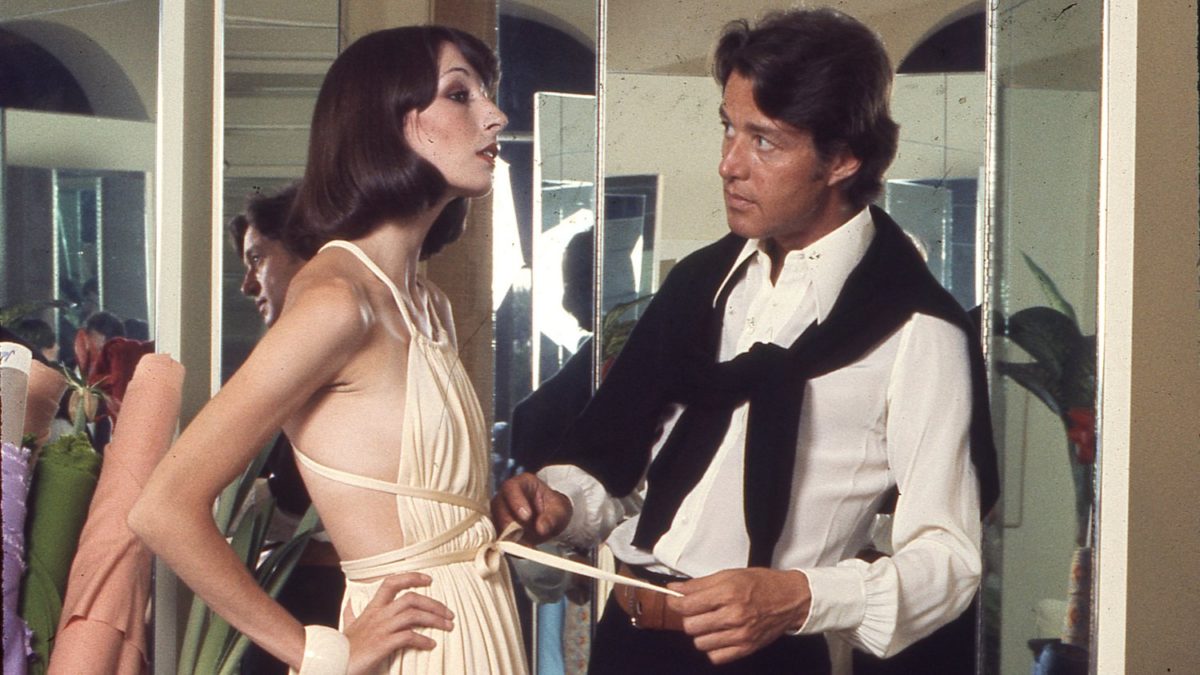
2019 could be the year the world rediscovers Halston, the groundbreaking designer who drove some of the key looks of the 70s and 80s. Not only have 80s looks been resurfacing for some time but Ewan McGregor is about to star in a TV dramatization of his life and work. Disappointingly this documentary by Frédéric Tcheng tears holes in its base material through a series of clumsy narrative choices and a mishandling of the central dramas of Halston’s life.
Halston was ahead of his time in understanding the role of public relations and media in creating a myth of glamour, hedonism and luxury. He meticulously crafted his image as a fully formed NYC style icon and erased his small town Iowa upbringing. Disdainful of the past he proclaimed that he only cared about what was now or next. His voice, his accent, his look was a series of choices designed to propel him forward. Way before Anna Wintour started putting celebrities on the cover of Vogue Halston was using movie stars, singers and artists as his clothes hangers. To this day Liza Minnelli is still dressed head to toe in his creations.

He nurtured a diverse design empire which he thought of as a “tree with many branches”. His iconic work was not just high-end couture, he designed Olympic team uniforms, girl guide outfits, and corporate wear for some of the 1980s biggest enterprises. Just as he looked unassailable he overreached. A billion-dollar deal with JC Penney so that he could “dress America” was one step too far. The deal cost him ownership of his name and the Halston brand became diluted. He lost creative control to the corporate bean counters. Arrogance and extravagance turned him into an internal exile.
The documentary has amazing source materials. As Halston was so concerned with his image wherever he worked became a set with a camera crew. The beautiful people are seen in the beautiful clothes. The charismatic and quirky satellites that orbited him are captured. Unhappily a choice is made to add an actor as narrator and archivist. Scenes of the invented archivist searching for the video tapes of Halston’s life present a jarringly false note. Recorded on what looks like different film than the 80s video tape source material they are off in hue and texture. It is visually awkward like the CGI effects George Lucas added to the Star Wars re-releases.
The documentary reaches a high point early on when it focuses on the public persona of Halston in the 1970s and 80s. It deflates after that due to inadequate exploration of the man behind it. There are TV interviews but minimal intimate material and it is hard to care about the man behind the looks. Apart from a quick trip to Fire Island, and some anecdotes about the bad behavior of one of his exes Halston is rendered sexless as a Ken doll.
Where the documentary under delivers most is in the treatment of the two crises of Halston’s life.
The story behind his corporate overreach come across as an accounting exercise being force fit into an episode of Dynasty. It was a business deal gone wrong due to the flaws in his character. But interviews with corporate accountants and business managers lacks the color and bite of the interviews with the fashion crowd.
Finally, there is Halston’s death from AIDS. The Ken Doll treatment of his sexuality and the cursory overview of the pre-AIDS sexual liberation render it intangible. The documentary does not get to grips with him beyond his work and public façade and with much of his inner life missing his death feels unwitnessed too

Review by Andrew Hebden
Queerguru Correspondent Andrew Hebden is a MEDIA & CULTURAL STUDIES graduate spending his career between London, Beijing and NYC as an expert in media and social trends. As part of the expanding minimalist FIRE movement he recently returned to the UK and lives in Soho. He devotes as much time as possible to the movies, theatre and the gym. His favorite thing is to try something (anything) new every day.

